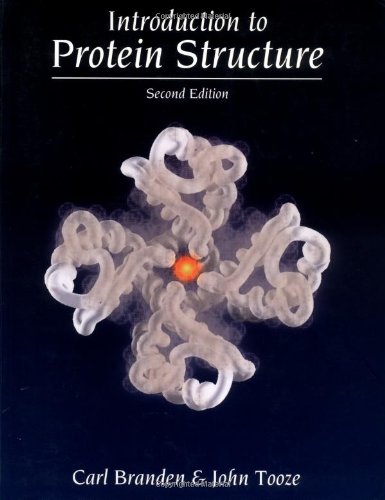Introduction to Protein Structure pdf free
Par estes patricia le vendredi, août 19 2016, 04:37 - Lien permanent
Introduction to Protein Structure. Carl Branden, John Tooze

Introduction.to.Protein.Structure.pdf
ISBN: 0815323050,9780815323051 | 415 pages | 11 Mb

Introduction to Protein Structure Carl Branden, John Tooze
Publisher: Taylor & Francis
By David Whitford Book Description Proteins: Structure and Function is a comprehensive introduction to the study of proteins and their importance to modern biochemistry. Since form follows function, the visualization of protein structures is vital for understanding biological complexity. [End of the introduction] Our results show that flagellum [should be “the flagellum”, sic] originated very early, before the diversification of contemporary bacterial phyla, and evolved in a stepwise fashion through a series of gene duplication, loss and transfer events. Since 1876, centrioles and centrosomes were shown to be involved in organizing fibrillar structures, including the spindle and mitotic asters within the cell as well as cilia and flagella in cells of many tissues [1]. Atomic force microscopy, optical tweezers, and other tools of nanotechnology have enabled induction and monitoring of large conformational changes in biomolecules. Our analysis reveals a structural expansion of translation proteins immediately following the RNA world and well before the establishment of the DNA genome. Subsequent functional annotation shows that representatives of the ten .. Proteins play an important role in living systems due to their unique structures that are large, flexible and complex (Schellekens 2004, Kumar et. As an illustrative tool broadens the readership of the manuscript. Proteins are the first of the important nutrients the body because it is the basic structure of cells, which amounts to 80 percent of the body. Simulating the Physical World" by Berendsen "Understanding Molecular Simulations" by Frenkel. We have altered the introduction to both eliminate any confusion over the credit for this model and acknowledge that other models for the origin of the genetic system have been proposed. Proteins mediate the majority of biological processes. We all know that protein structure and protein homology are notoriously difficult to correlate – elsewise, Pande wouldn't have a gazillion PCs crunching the folding data. Utilizing a biochemical approach, such as limited proteolysis coupled to N-terminal sequencing or mass spectrometry, can yield empirical information from the yet unknown protein structure. DNA meets protein – A short introduction to the PyMOL editor. The protein structure-function paradigm has been believed as a dogma in the 20th century. Something more general in the light of protein structure: "Introduction to Protein Structure" by Branden and Tooze. The book starts with an introduction to proteins and their structure which is helpful for the uninitiated.